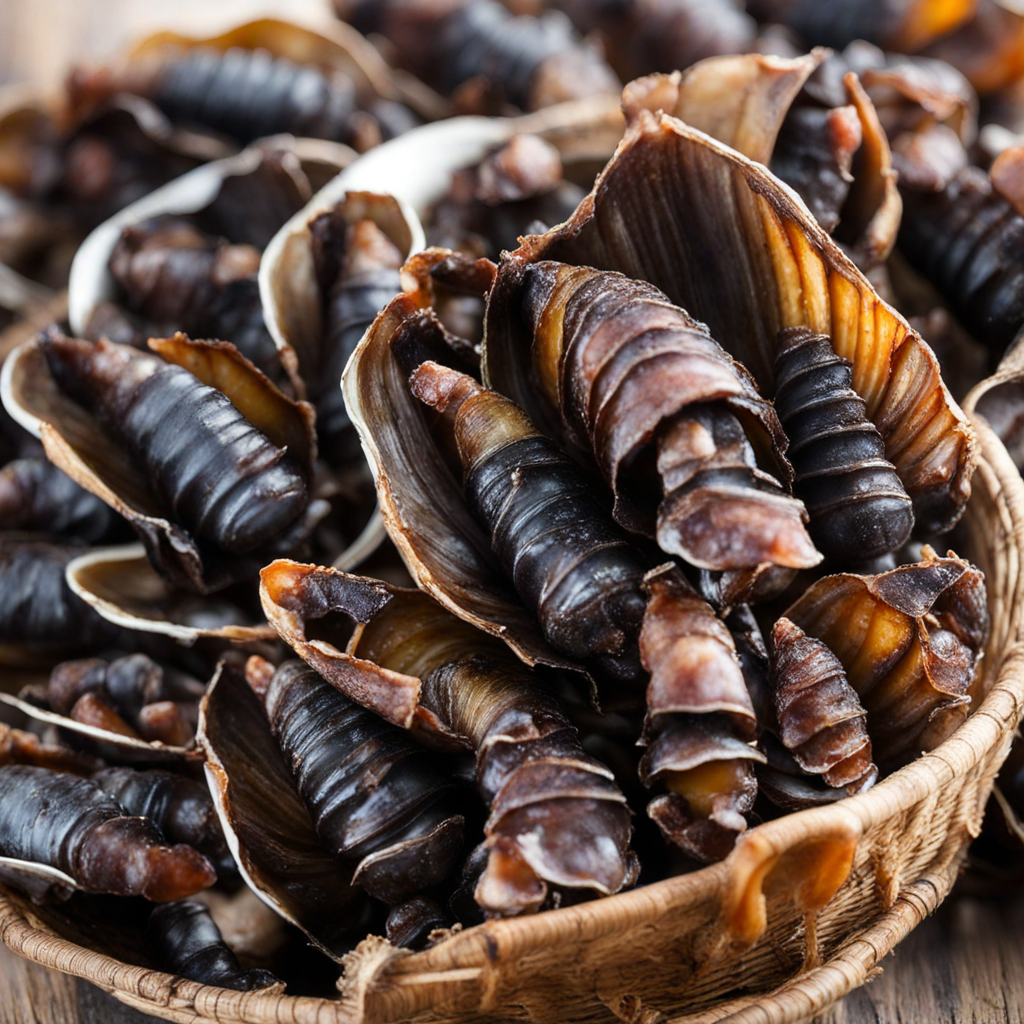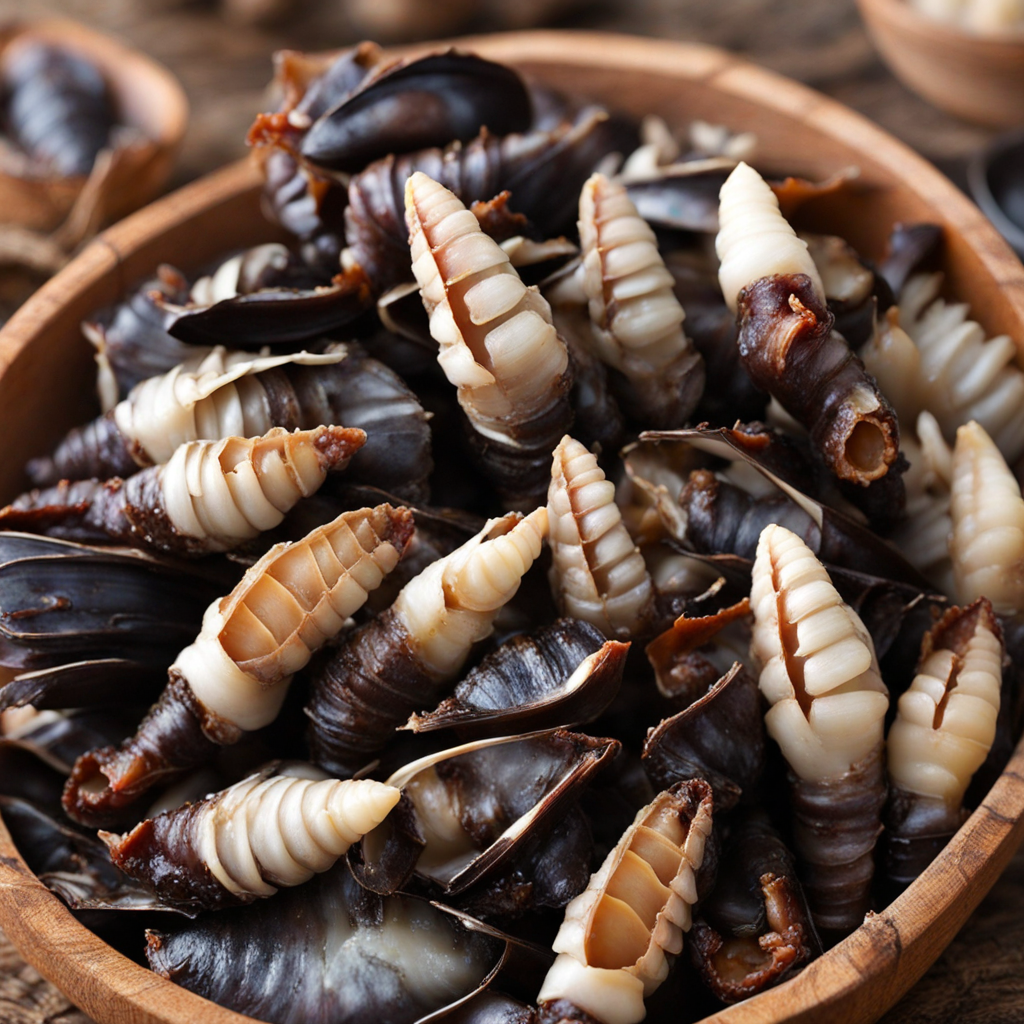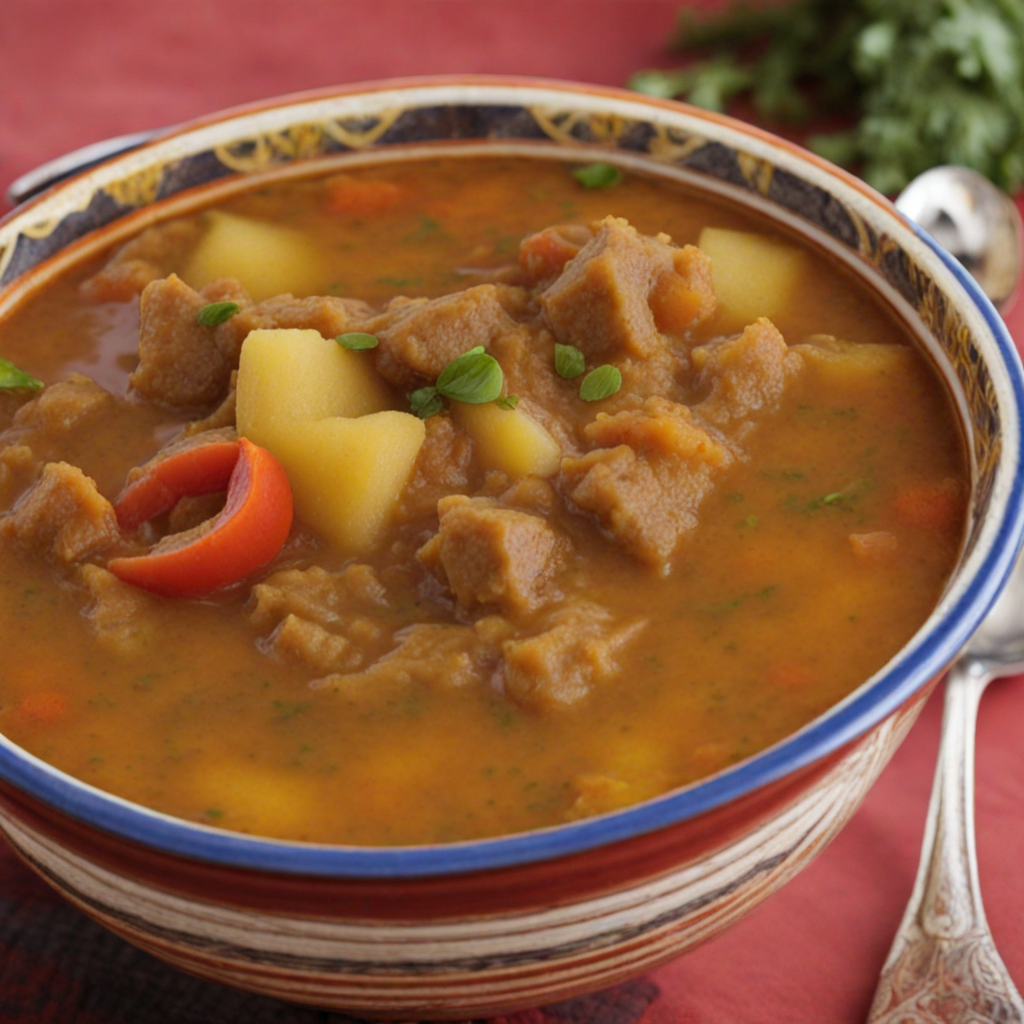Percebes
Percebes, also known as gooseneck barnacles, are a unique delicacy found along the rugged coastlines of Cape Verde. These fascinating marine creatures thrive in the rocky intertidal zones, clinging tightly to the rocks, which makes harvesting them a challenging and adventurous endeavor. The appearance of percebes is striking, resembling elongated, greenish-brown necks topped with a hard shell, and they are often considered a symbol of coastal gastronomy in this island nation. Their distinct look might be intimidating, but the flavor they offer is truly worth the exploration. When cooked, percebes reveal a tender, succulent texture that is reminiscent of the sea, with a flavor profile that strikes a perfect balance between briny and slightly sweet. The best way to enjoy percebes is to steam or boil them briefly, which enhances their natural taste without overpowering it. Once prepared, they can be served simply with a sprinkle of sea salt or a drizzle of olive oil, allowing the freshness of the barnacles to shine through. In Cape Verdean cuisine, they are often enjoyed as an appetizer or as part of a seafood platter, where their unique taste can be fully appreciated alongside other local specialties. The experience of indulging in percebes goes beyond just taste; it is also about the connection to the sea and the rich cultural heritage of Cape Verde. These barnacles are often harvested by local fishermen who have passed down traditional methods through generations. Eating percebes is not just about savoring a dish, but also embracing the stories and traditions that accompany it. For those seeking to discover new flavors, percebes offer an invigorating culinary adventure that captures the essence of Cape Verde’s coastal life.
How It Became This Dish
Percebes: The Unique Delicacy of Cape Verde Origin and Discovery Percebes, known in English as goose barnacles, are a unique seafood delicacy that thrives along the rocky coastlines of various regions, including the Atlantic shores of Cape Verde. These marine crustaceans, scientifically classified as *Pollicipes pollicipes*, are not only a culinary treasure but also a symbol of the rich maritime culture of Cape Verde, an archipelago located off the northwest coast of Africa. The origin of percebes in Cape Verde is deeply rooted in the region's geography and fishing traditions. Cape Verde, comprised of 10 volcanic islands, boasts a rugged coastline characterized by jagged cliffs and tidal pools, creating an ideal habitat for these barnacles. The local fishermen, known for their seafaring prowess, have harvested percebes for centuries, utilizing traditional methods passed down through generations. Historically, the indigenous people of Cape Verde relied heavily on the ocean for sustenance, and percebes became an integral part of their diet, reflecting the bountiful marine resources surrounding the islands. Cultural Significance In Cape Verdean culture, percebes hold more than just culinary value; they embody a connection to the sea and the resilience of the islanders. The harvesting of percebes involves considerable skill and bravery, as fishermen must navigate treacherous rocky outcrops and turbulent waves to collect these prized mollusks. This practice not only showcases the deep-seated relationship between the community and their environment but also highlights the importance of maritime traditions in Cape Verde’s cultural identity. Percebes are often featured in local festivals and celebrations, symbolizing the harvest's bounty and the community's spirit. During these events, traditional dishes are prepared, showcasing the versatility of percebes in Cape Verdean cuisine. They are commonly boiled or steamed and served with a sprinkle of sea salt, allowing their natural briny flavor to shine. The dish is often accompanied by local wines, enhancing the dining experience and bringing the community together around a shared appreciation of their cultural heritage. Development Over Time As Cape Verde has evolved, so too has the perception and preparation of percebes. In the early days, the harvesting of percebes was primarily a subsistence activity, where local fishermen would collect them for their families. However, as tourism began to grow in the late 20th century, the demand for percebes increased, transforming from a local delicacy into a culinary attraction for visitors. The introduction of percebes to a broader audience has led to a renewed interest in the traditional harvesting techniques and recipes. Many chefs on the islands have embraced this unique ingredient, experimenting with innovative cooking methods while respecting the traditional flavors that reflect Cape Verde’s culinary heritage. This fusion of tradition and modernity has allowed percebes to gain recognition beyond the islands, establishing them as a sought-after delicacy in gourmet circles worldwide. The increase in tourism has also brought challenges. The heightened demand for percebes has raised concerns about overfishing and sustainability. Fishermen are now faced with the delicate balance of preserving their cultural practices while ensuring the long-term viability of the species. Efforts are being made to promote sustainable harvesting practices, with local organizations advocating for responsible fishing methods to protect the delicate marine ecosystem and maintain the integrity of the percebes population. Culinary Techniques and Recipes In Cape Verde, the preparation of percebes is a celebration of simplicity. The most common method involves boiling them briefly in salted water, allowing the natural flavors to emerge. Once cooked, they are often served with a drizzle of olive oil or a squeeze of lemon, enhancing their briny taste without overwhelming it. This straightforward approach reflects the Cape Verdean philosophy of cooking—using fresh, local ingredients to create dishes that honor the land and sea. Beyond the classic preparation, innovative chefs have incorporated percebes into diverse culinary creations. They may be added to seafood stews, risottos, or even paired with pasta, showcasing their versatility and ability to complement a variety of flavors. The rich umami profile of percebes lends itself well to fusion dishes, allowing chefs to bridge Cape Verdean traditions with global culinary trends. Global Recognition and Future Prospects As the culinary world continues to embrace regional specialties, percebes from Cape Verde are gaining recognition on the global stage. High-end restaurants and seafood markets are increasingly featuring these barnacles, showcasing their unique texture and flavor. The rise of social media has also played a significant role in this phenomenon, with food enthusiasts sharing their experiences of enjoying percebes, further elevating their status as a delicacy. The future of percebes in Cape Verde looks promising, but it also requires careful stewardship. Sustainable fishing practices, education about the importance of marine conservation, and community involvement are vital in ensuring that this unique delicacy can be enjoyed by future generations. Local organizations and fishermen are working together to promote responsible harvesting methods and raise awareness about the ecological significance of the coastal ecosystems where percebes thrive. Conclusion Percebes are more than just a seafood delicacy; they are a testament to the rich cultural history of Cape Verde and the enduring relationship between its people and the ocean. From their humble origins as a vital food source for local communities to their rise as a culinary sensation, percebes embody the spirit of Cape Verde—resilient, innovative, and deeply connected to the sea. As the world continues to discover the unique flavors of Cape Verde, it is essential to honor the traditions and practices that have sustained this delicacy for centuries, ensuring that percebes remain a cherished part of Cape Verdean heritage for years to come.
You may like
Discover local flavors from Cape Verde







